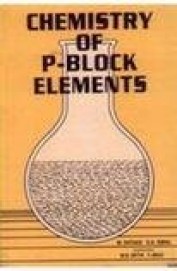
Heating Boron and Aluminiumevolves B 2O 3 and Al 2O 3.ĢE(s) + 3O 2 (g) ⎯⎯→ 2E 2O 3 (s)2E(s) + N 2 (g) ⎯⎯→ 2EN (s)Īl fuses with acids and transforms into a hydroxide or oxide compound.ĢAl(s) + 6HCl (aq) → 2Al3+ (aq) + 6Cl– (aq) + 3H2 (g)Ĭlass 11 Chapter 10 S Block Elements Important Compound of Boron: Orthoboric Acid Next in our class 11 p block elements notes is Boron family element’s chemistry with various external bodies. The order infers that the +1 oxidation state increases for the heavier elements steadily. The oxidation state of the elements escalates in the following manner: Ti> In > Ga > Al. When the oxidation state is +1 for the Boron family, the group oxidation state increases by 2. The following table contains the oxidation states for the Boron family among the other groups of the p-block elements.Īnalysing the table, you can notice the constant difference in the oxidation state values across the family elements. Between the two, the oxidation state is more stable for the heavy elements.

Apart from the oxidation state, p block elements might also exhibit other oxidation states called group oxidation states. The sum of the s and p orbital electrons equals the oxidation state of the p-block elements. Listed below are the major parameters for stating the chemical properties in our class 11 p block elements notes- Oxidation State The p block elements reflect almost the same chemical properties. The following table contains a distinction between essential properties of boron and other elements- Boron Youtube: Best for NEET p Block Elements: Physical PropertiesĪll the elements other than the Boron possess similar characteristics. The electronegativity depletes between B and Al but gradually increases after these elements. There are discrepancies in ΔH between Al, Ga, In, and Ti due to the inability of d and f electrons, ΔH = Δ iH 1+ Δ iH 2 + Δ iH 3 The next topic in our class 11 p block elements notes is ionization enthalpy. It increases as there is an increase in the energy levels around the nucleus. This, in turn, affects the intensity of the chemistry and other properties at various levels.Ītomic radius surges when moving from the Boron to the last element at an ascending rate.

The Boron family has a structure different from the other two families due to the composition of various cores.

The electronic configuration for the group 13 elements is ns 2np 1. Through the electronic configuration, we can depict the area of the electrons around the spectra of the nucleus. Let us now have a look at some of their distinguishing features-Įlectrons revolve around the nucleus. The elements belonging to this group, majorly comprises metals and non metals elements. The group 13 family has elements from Boron to Nihonium. In our class 11 p block elements notes, the discussion begins with the topic of group 13 elements.


 0 kommentar(er)
0 kommentar(er)
